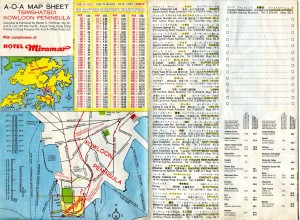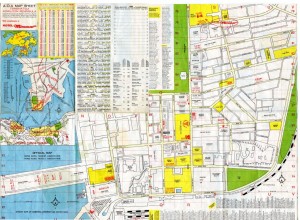We’ve described how to use Microsoft ICE in a previous post: Microsoft ICE This free program works well with normal photographs but we ran into a problem this week with scans of an old map. Here’s how we managed to work it out.
1. We scanned each side of the map using six separate scans. When we placed it on the scanner, we made sure that the map was square and that each scan overlapped the previous scan. When we finished, we had six full platen scans.

2. In order to ensure that each photograph was oriented the correct way, seeing as how we had to scan some parts of the map upside down, we opened each photo in Irfanview and used the original document as a guide. Some photos had to be turned horizontally left or right. Irfanview is great for looking at photos plus it has many tools with it. We’ll use it later on to make a PDF out of the map. A PDF can handle a large file much better than a JPG photo plus you can zoom in our out at will. For photo editing, however, we use the GIMP. (GIMP is short for Gnu Image Manipulation Program and it’s free.)
3. Once the GIMP was up and running, we created a new file. That new file had to be large enough to accept all six of the scanned documents (photos). The map was about three scans wide and two high. Doing the math created a huge new file. How big was the file? It measured 6920 pixels wide by 5090 high. That’s big!
4. With the file open on one monitor, we opened the folder with the scanned photos in the other monitor. One by one, we dragged each photo from the fold to the new GIMP file. Every time you add a photo to a GIMP file, you create another layer. All of this is done for you, just drag and drop.
5. Once two images were in the new file, we would roughly align them to match each other. With a map, this is pretty easy because of things like roads and location names. Then we added the rest of the scans one by one and arranged them accordingly.
6. After all six scans were in the new GIMP image, we zoomed in and aligned them more precisely. This took a bit of time but, as we said, it’s much easier with a map than it is with a photo.
7. Six separate images mean six layers. A six layered image can’t be saved as a JPG so we had to ‘flatten’ the image into one layer. We double-checked our alignment then selected flatten under the Image tab then saved the image as a JPG file.

8. Lastly, we used Irfanview to create a PDF from the two large GIMP images, one for the front of the map and the other for the back. Here’s our instructions for that: Creating a PDF with Irfanview
This is a basic outline of what you have to do to scan large documents. Microsoft ICE works perfectly…most of the time. We were surprised that it didn’t seem to be able to handle the maps but, as it turns out, we did well on our own. You will too.
Thanks for reading! If you have questions, ask us.
Follow us on Facebook. Just click Like and you’ll get all our updates and tech tips as soon as we post them:Computers Made Simple on Facebook
